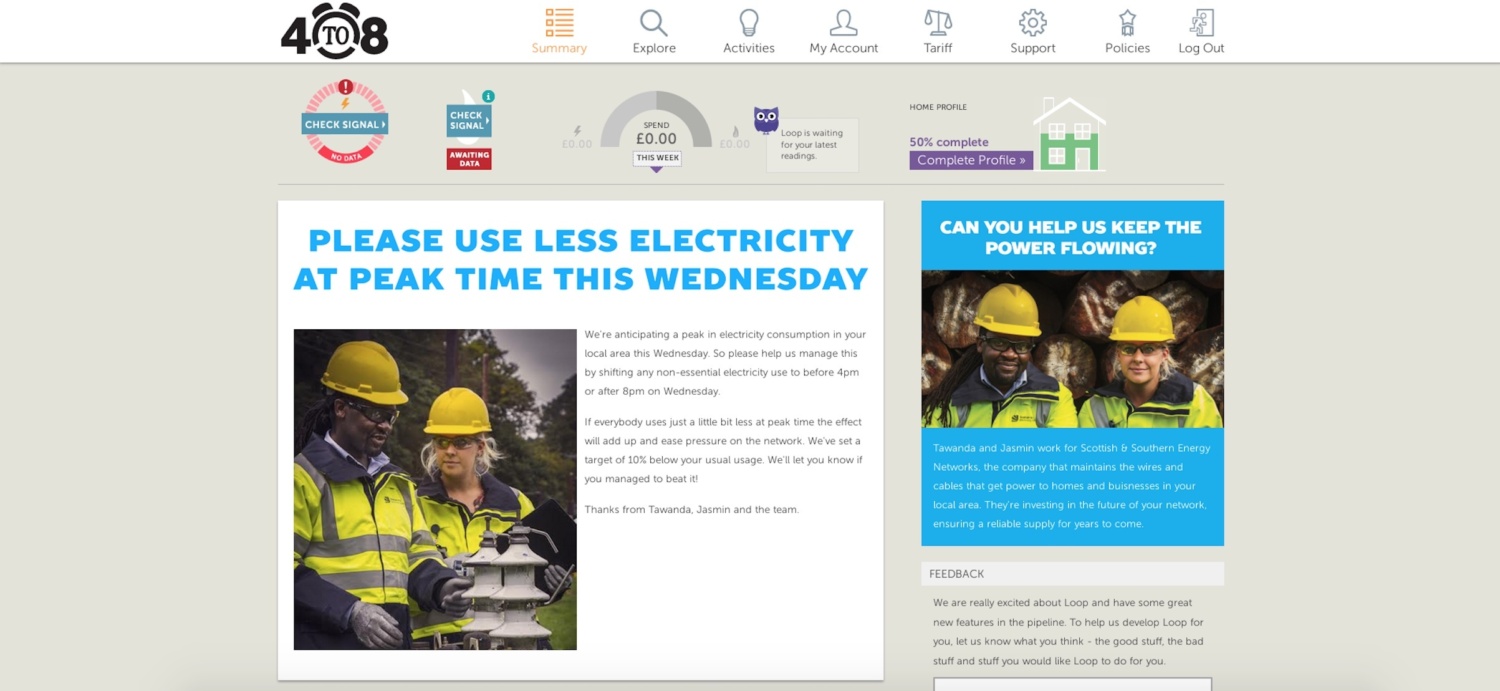Background
SAVE (Solent Achieving Value in Efficiency) was a major £8m Ofgem funded trial in 4,000 homes in the Solent region. We worked with Scottish & Southern Electricity Networks, University of Southampton and energy consultants DNV GL to test the potential of behaviour change interventions to reduce peak time electricity use.
Insight
For District Network Operators like SSEN, who manage our local electricity networks, reducing peak demand – between 4pm and 8pm – is imperative if the cost of upgrading and maintaining the under-pressure grid is to be kept down. But establishing how to encourage households to use less, at the time when they usually use the most, is challenging. Using an innovative online research methodology, we engaged with families to get under the skin of their electricity usage during peak hours to understand how they might respond to different types of interventions.
We learned that 4-8pm is peak time for a reason
People are at home doing things they consider essential. While there are no low hanging fruit in terms of types of usage that could easily be reduced, we did identify certain high-energy appliances (such as the washing machine) that offered potential to do so.

Intervention
Our research left us with a dilemma, whether the behaviours we were promoting should primarily be about cutting usage during 4-8pm or shifting it to outside of the peak period. The long term nature of this trial has allowed us to test both approaches in sequence, as well as many different engagement tactics, using multiple behavioural tools.

Behavioural insights applied in this work have included:
- Social norms
- Defaults
- Trusted messengers
- Incentives and loss aversion
- Salience and reminders
- Commitments, goals and feedback

Implementation
Our first trial period ran from Jan to Mar 2017 and tested a ‘shift’ proposition: “Can it wait till after 8?” Using SSEN’s own staff as trusted messengers, we developed a range of materials posted to households which explained the importance of reducing peak time pressure on the network and how we can all help keep the power flowing. This was the hardest ‘sell’ as this proposition incorporated no direct benefit to the individual.
The second trial period from Oct 2017 to Mar 2018 saw us test a ‘cut’ proposition. This involved more of an obvious direct benefit to the householder and allowed us more scope to try a number of different tactics. We developed a character who could deliver a series of different messages and reminders, through a range of channels including an innovative posted ‘pack’, emails, text messages and an online hub to access real time info on energy use with daily/weekly targets that we could set. We moved beyond ‘standard’ energy efficiency messaging to be much more targeted on the 4-8pm period and why particular behaviours would be relevant then.

During trial period three, from Oct to Dec 2018, we further tested the use of incentives, devising a way to simulate that householders were being put on a differential pricing tariff. This tested how people would respond to a potential future energy scenario where the price of energy differs depending on the time period, incentivising them to use less during peak time, when prices are significantly higher.
Click here to view our animated film which helped explain the importance of peak time and how households could benefit from acting on differential pricing.
Impact
The trial was evaluated robustly by the University of Southampton who collected 15 minute consumption data directly from participants’ electricity meters over 3 years, monitoring trends and the effect of particular messages and types of materials sent. Participants were divided into four groups of 1,000 homes, three of which have been receiving different interventions, with one as the control group. UoS analysis showed that many of the interventions have had significant effects on consumption during peak hours. When scaled up, these effects could have important implications for the energy industry as a whole. Full results and reports are available here.